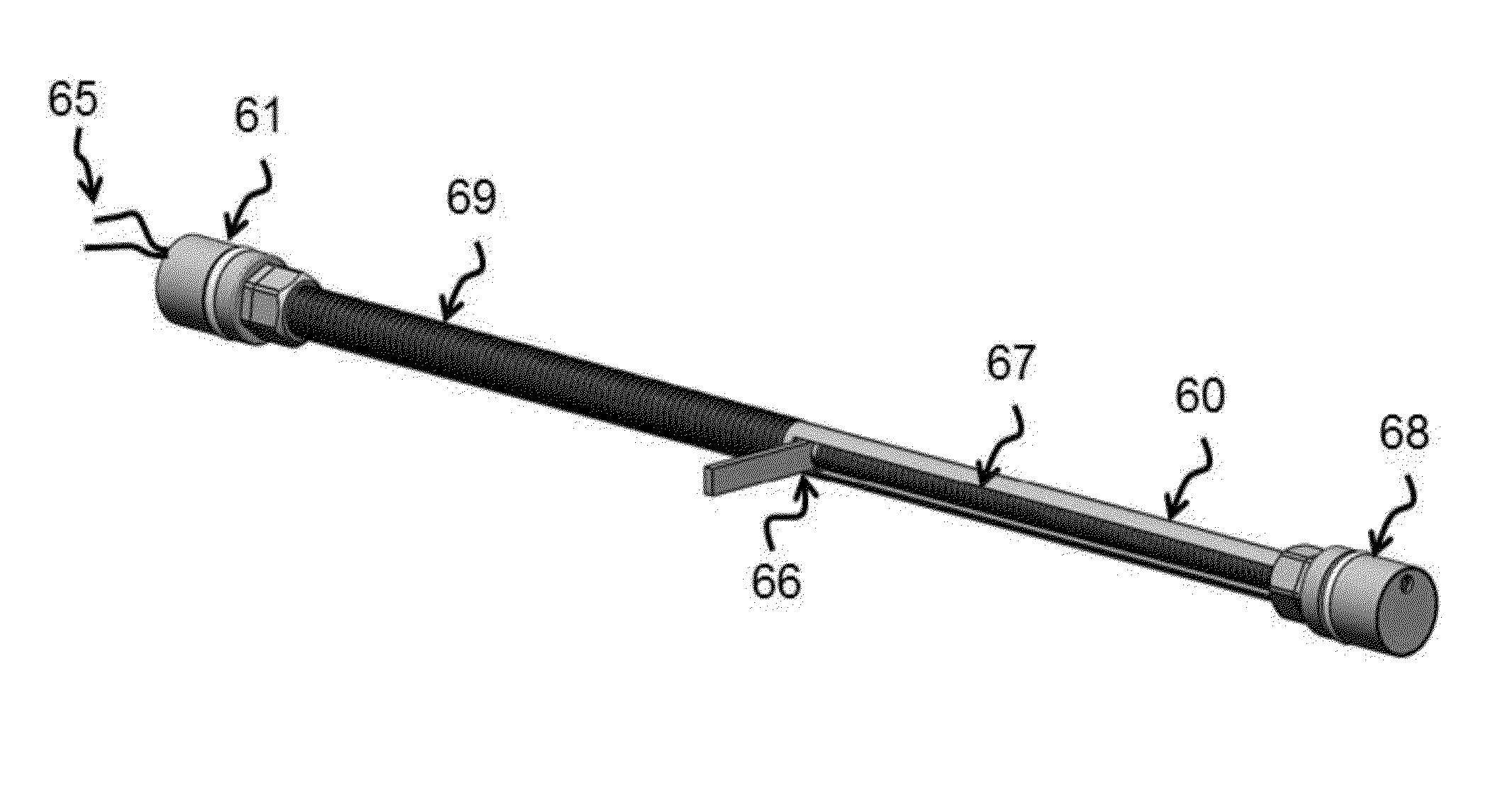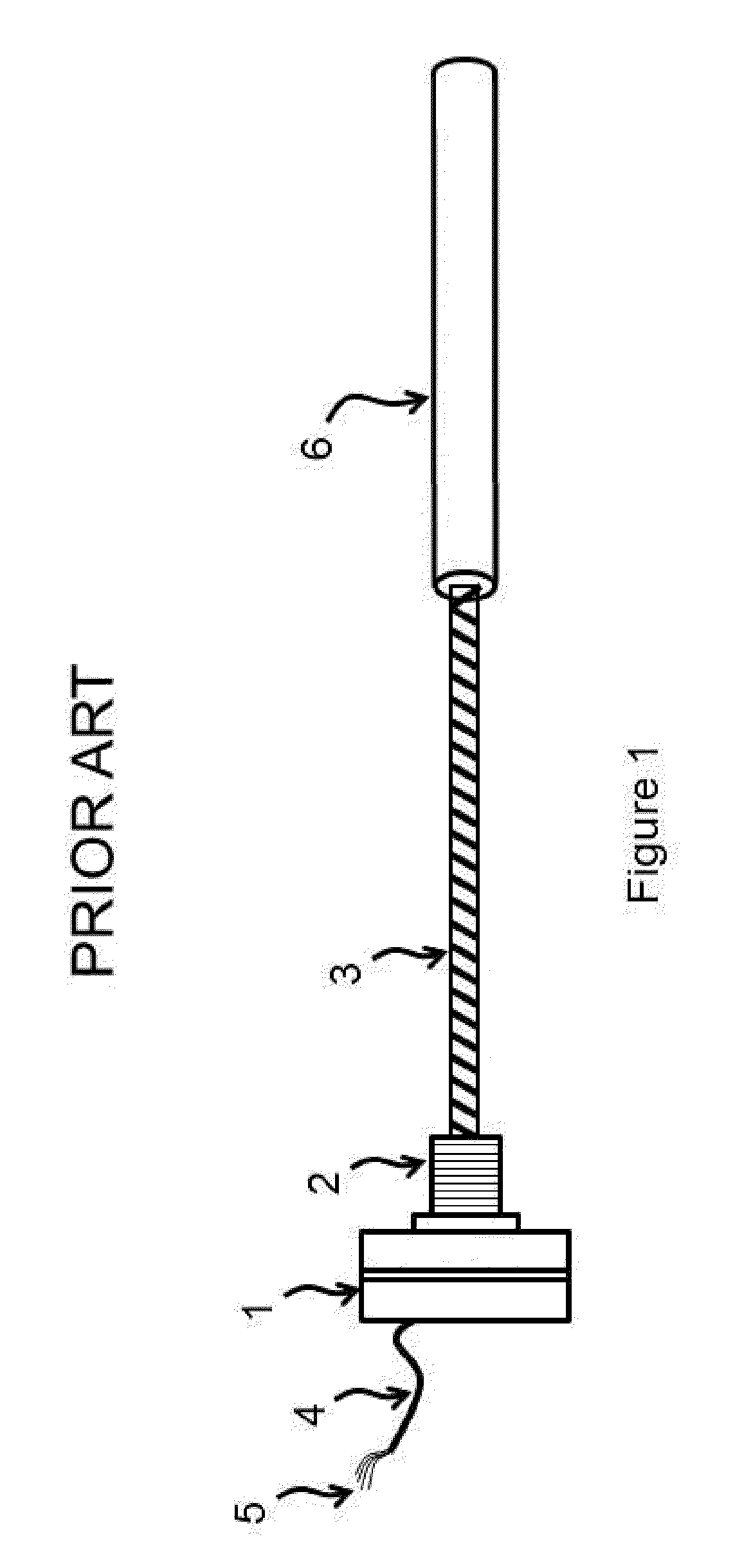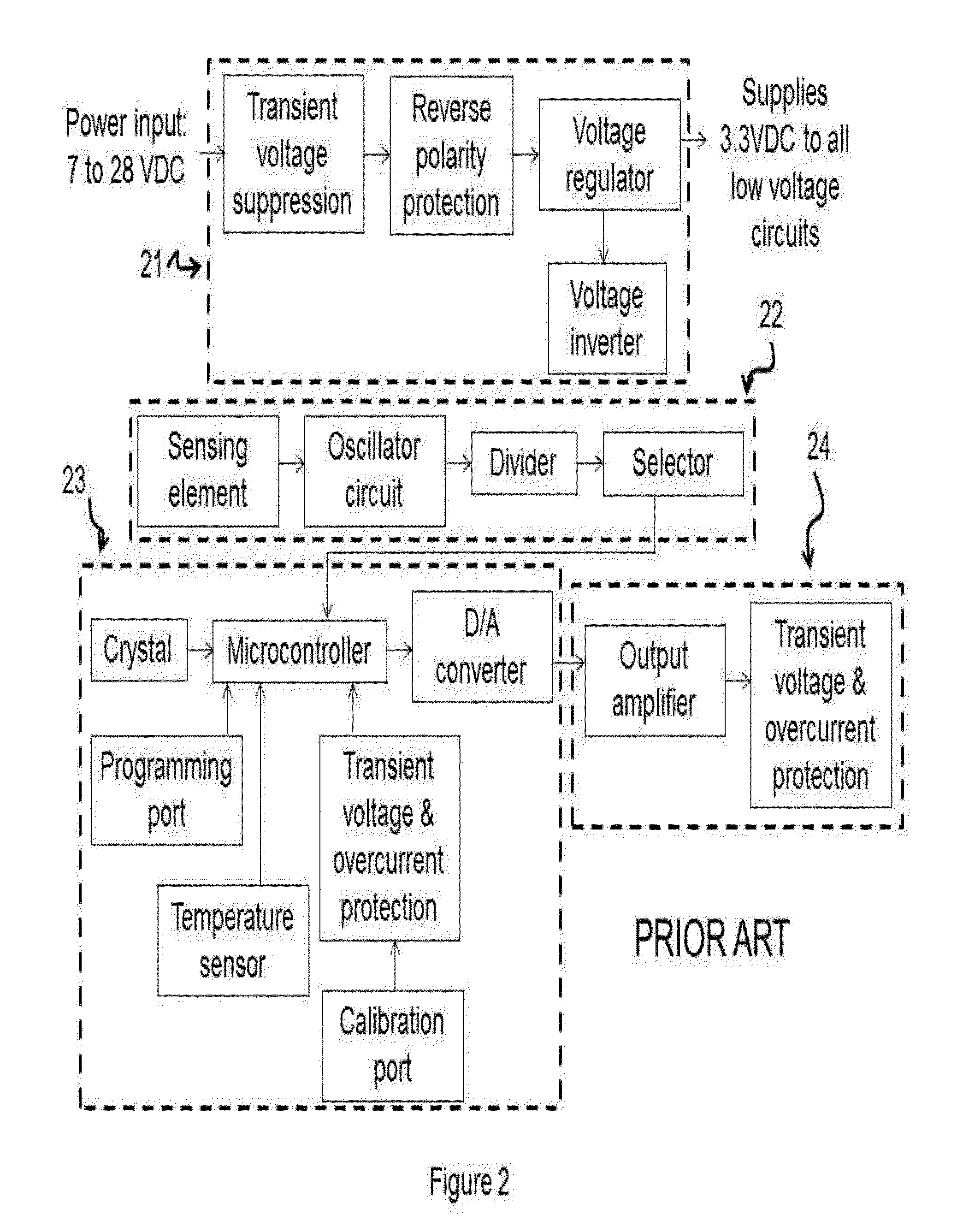Position sensing head with redundancy
a technology of sensing head and redundancy, applied in the field of sensors, can solve the problems of difficult or impossible to find specialized components, difficult or difficult to find on the market, and difficult to achieve the effect of reducing the accuracy of the signal, simple components, and high temperature operation
- Summary
- Abstract
- Description
- Claims
- Application Information
AI Technical Summary
Benefits of technology
Problems solved by technology
Method used
Image
Examples
Embodiment Construction
[0025]In order to implement the first improvement of the invention, which is a sensing head, a simplified circuit is designed so that, if desired, only basic electronic components of the type that are easily found on the market with operating temperatures of 225° C. and higher may be used. The simplified circuit includes an oscillator coupled with a sensing element. The sensing element can be of a new design, or one that is already known in the art. The sensing element and oscillator provide a frequency that is representative of a measured position. The simplified circuit also includes a buffer to output the signal frequency. The combination of one or more oscillators and one or more buffers comprises the simplified electronic module.
[0026]FIG. 1 is a Prior Art electromagnetic linear position sensor in accordance with U.S. Pat. No. 7,216,054. The housing (1) encloses an electronics module (not shown), which is usually manufactured as a printed circuit board having electronics compon...
PUM
 Login to View More
Login to View More Abstract
Description
Claims
Application Information
 Login to View More
Login to View More - R&D
- Intellectual Property
- Life Sciences
- Materials
- Tech Scout
- Unparalleled Data Quality
- Higher Quality Content
- 60% Fewer Hallucinations
Browse by: Latest US Patents, China's latest patents, Technical Efficacy Thesaurus, Application Domain, Technology Topic, Popular Technical Reports.
© 2025 PatSnap. All rights reserved.Legal|Privacy policy|Modern Slavery Act Transparency Statement|Sitemap|About US| Contact US: help@patsnap.com



